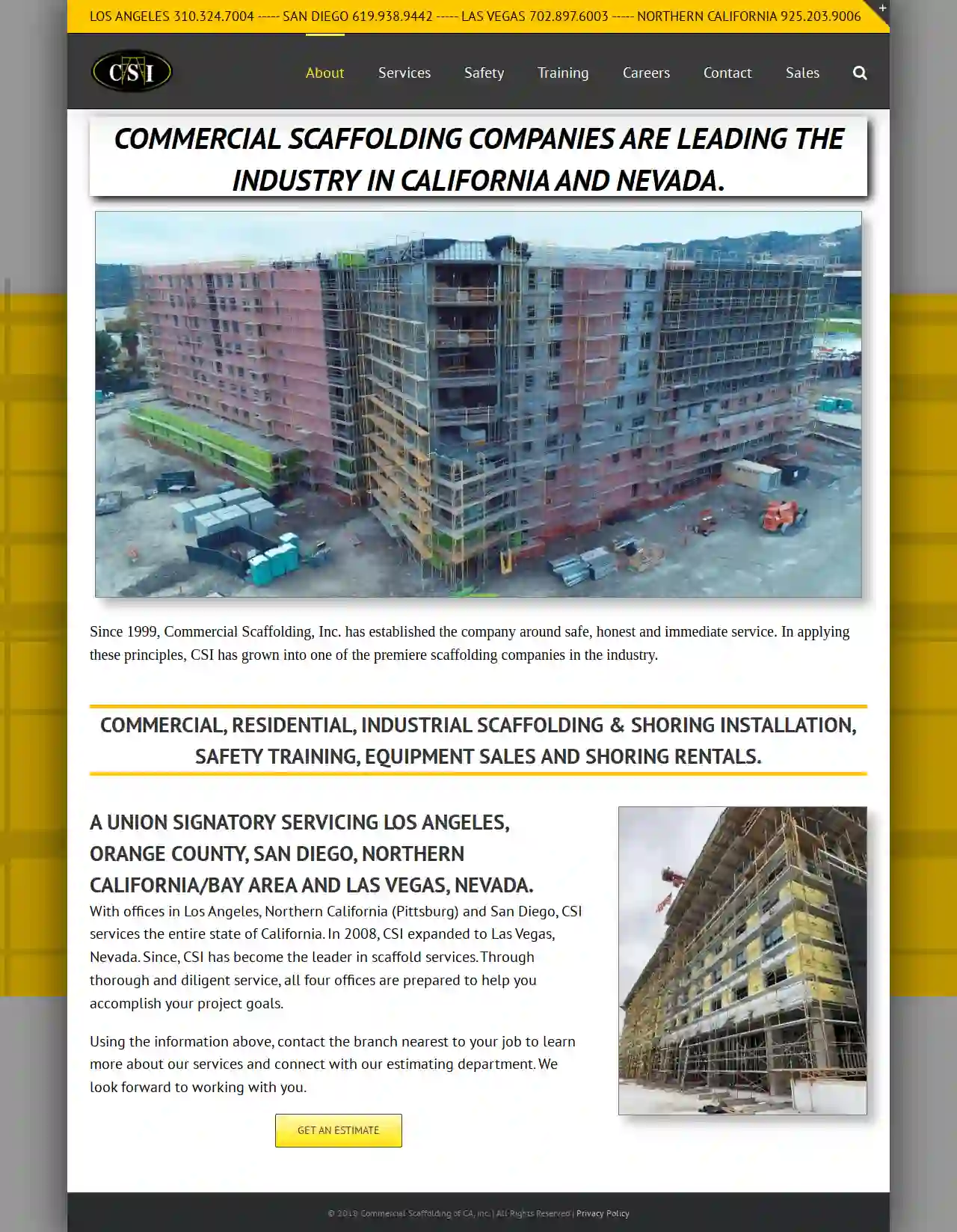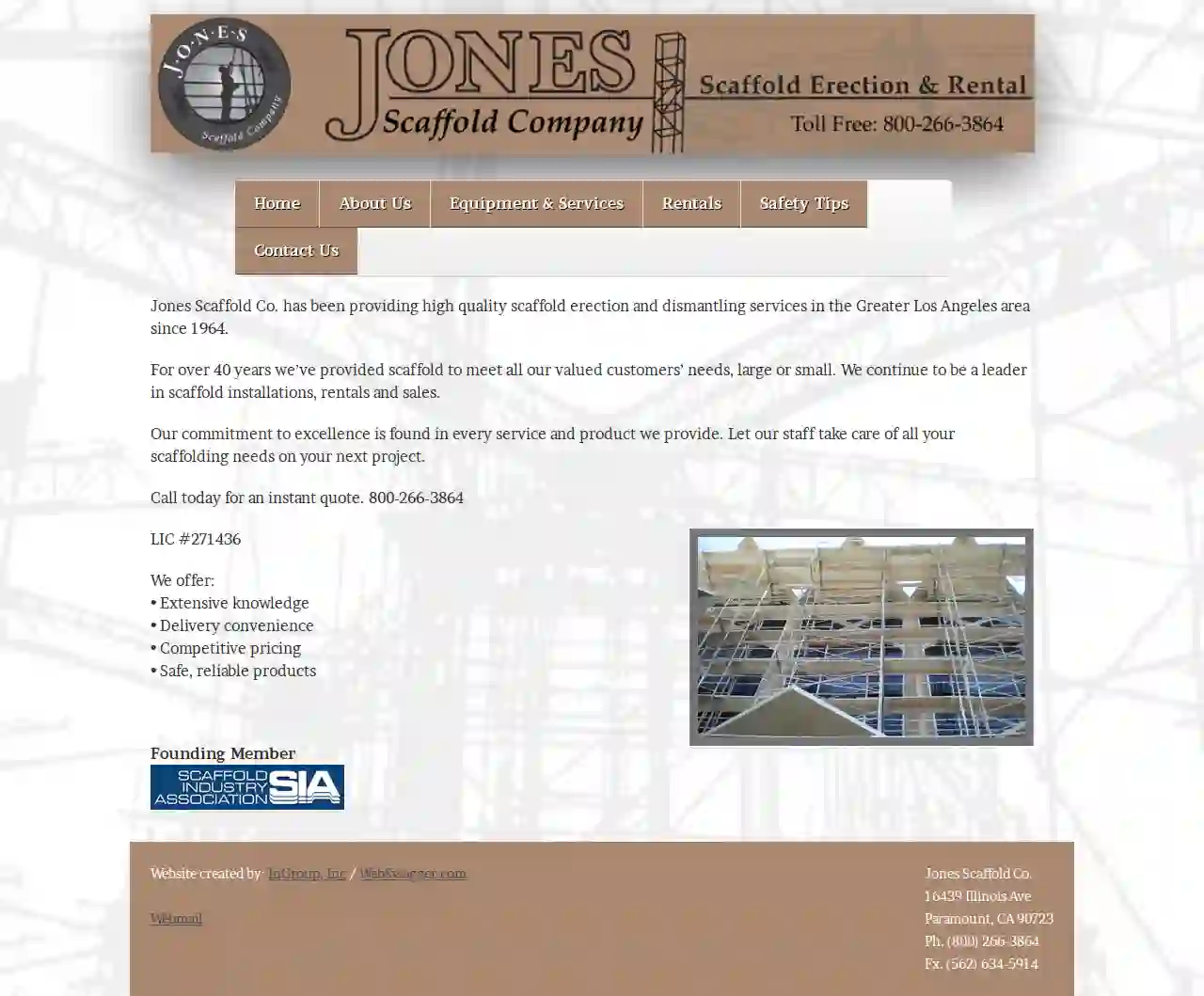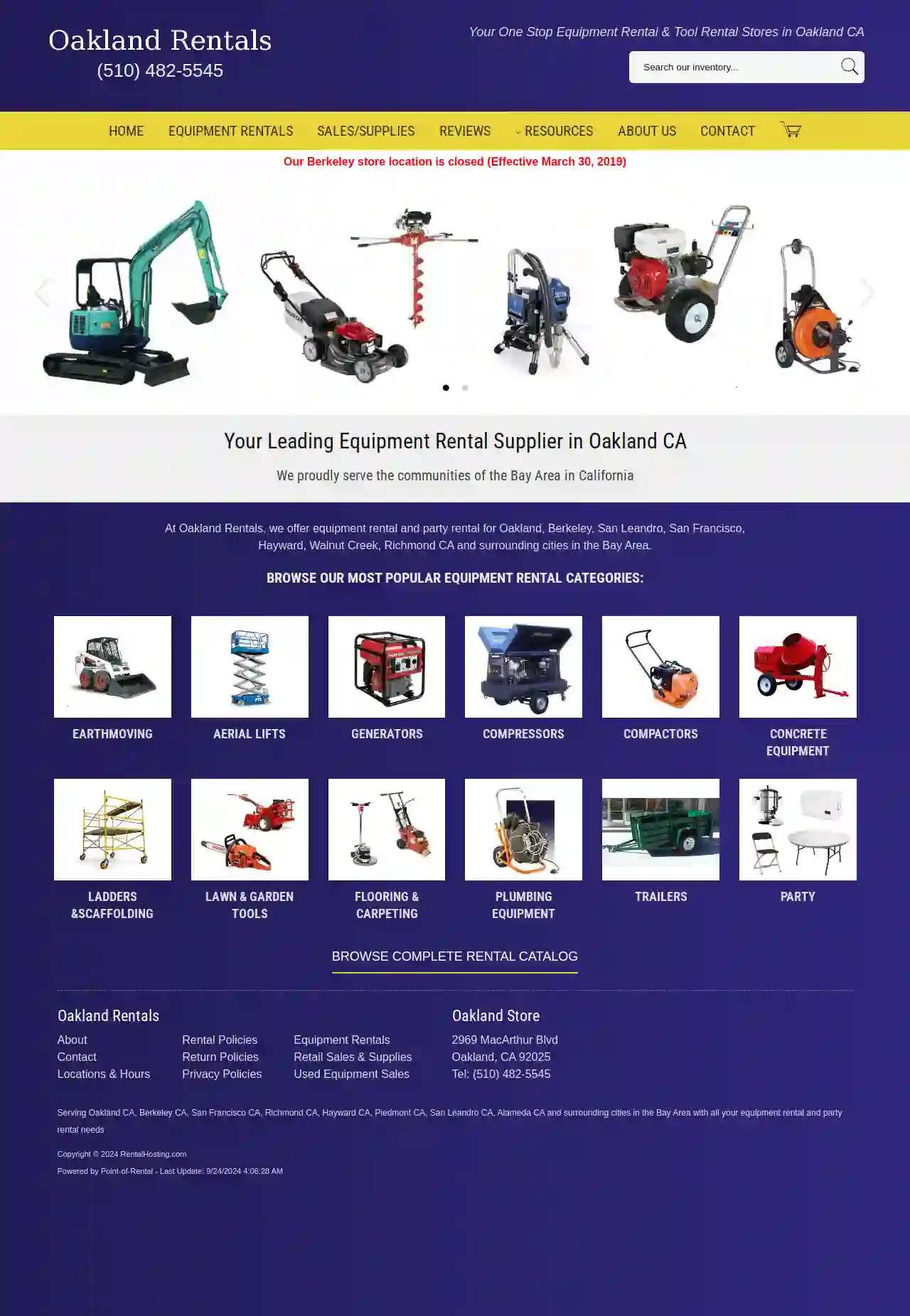Scaffolding Companies Fort Bragg
Find the best Scaffolding Erectors in Fort Bragg
Receive up to 3 Scaffolding Companies quotes for your project today! Compare profiles, reviews, accreditations, portfolio, etc... and choose the best deal.

D L Scaffolding Inc
54 reviewsSan Rafael, USAt DL Scaffolding Inc, we provide safe, high-quality, and timely scaffold services to our clients in the San Francisco Bay Area and beyond. With a strong focus on trust, integrity, dependability, efficiency, detail-orientedness, and timeliness, we strive to deliver exceptional results that meet our clients' specific project needs. Our team of experts offers a range of services, including scaffold design and planning, scaffold erection, scaffold dismantling, scaffold rental, deliver and pick-up, and project management. We take pride in our ability to provide end-to-end scaffold services that ensure on-time completion and adherence to safety standards.
- Services
- Why Us?
- Gallery
Get Quote
A1 Equipment Rentals
4.927 reviews5809 E Brown Ave, Fresno, 93727, USWelcome to A1 Equipment Rentals, your #1 source for equipment and tool rentals, and supplies in Fresno, CA. Our goal is to provide our customers in the Central Valley with a great rental experience. We offer solutions for homeowners and contractors, and our family-owned and operated business has been serving the community since 2013. Our story began when Justin Priddy, our founder, worked as a manager at a small local equipment rental company for 13 years. When the owner decided to close the business overnight, Justin saw an opportunity to start his own rental yard that would cater to small businesses and homeowners. With the help of his parents, Bill and Jordan Priddy, A1 Equipment Rentals was established, and we've been growing ever since. We believe in building strong relationships with our customers, treating each person like family, and providing excellent customer service. Our team is dedicated to helping you rent the right equipment and tools you need to get the job done. Whether you're a professional contractor or a homeowner, we've got you covered.
- Services
- Why Us?
- Our Team
- Gallery
Get Quote
Commercial Scaffolding of California, Inc.
4.813 reviewsLos Angeles, USCommercial Scaffolding, Inc. (CSI) is a leading scaffolding company in California and Nevada, providing safe, honest, and immediate service since 1999. With offices in Los Angeles, Northern California, San Diego, and Las Vegas, CSI offers a range of services including commercial, residential, and industrial scaffolding and shoring installation, safety training, equipment sales, and shoring rentals. The company is a union signatory, dedicated to helping clients achieve their project goals.
- Services
- Why Us?
- Gallery
Get Quote
Jones Scaffold Co
3.25 reviews16439 Illinois Ave, Paramount, 90723, USJones Scaffold Co. has been providing high quality scaffold erection and dismantling services in the Greater Los Angeles area since 1964. For over 40 years we’ve provided scaffold to meet all our valued customers’ needs, large or small. We continue to be a leader in scaffold installations, rentals and sales. Our commitment to excellence is found in every service and product we provide. Let our staff take care of all your scaffolding needs on your next project. Call today for an instant quote. 800-266-3864 LIC #271436 We offer: Extensive knowledge Delivery convenience Competitive pricing Safe, reliable products Founding Member
- Services
- Why Us?
- Gallery
Get Quote
Ready Equipment Rental Inc.
421 reviews3969 N Sierra Way, San Bernardino, 92405, USAt Ready Equipment Rental, we have been providing our customers in the greater San Bernardino - Riverside Counties with an extensive variety of quality equipment rentals and tool rentals since 1988. From floor sanders to tile saws, utility trailers to tillers, tractors and bobcats to pressure washer's, we have the rental equipment and tools you need to build, maintain, power, move, or clean your projects. We are family owned, conveniently located at 3969 N Sierra Way, in San Bernardino Just north of the 210 Freeway and Waterman ave. We are here to help anyway we can for all your equipment rental and tool rental needs. Ask us about our affordable delivery and pickup, new and used equipment for sale.
- Services
- Why Us?
- Gallery
Get Quote
Oakland Rentals
4.360 reviews2969 MacArthur Blvd, Oakland, 92025, USAt Oakland Rentals, we offer equipment rental and party rental for Oakland, Berkeley, San Leandro, San Francisco, Hayward, Walnut Creek, Richmond CA and surrounding cities in the Bay Area. We proudly serve the communities of the Bay Area in California. Our Berkeley store location is closed (Effective March 30, 2019).
- Services
- Why Us?
- Gallery
Get Quote
Orange County Scaffold Inc
3.29 reviews121 E. Meats Ave., Orange, 92865, USOC Scaffold is a leading Southern California scaffold provider with unparalleled expertise in the industrial, commercial, residential, and infrastructure sectors. For over 50 years, our family-owned business has built strong relationships within the industry, handling projects ranging from small-scale to multi-million dollar ventures. We specialize in delivering innovative scaffolding solutions, temporary access and egress, and industrial services, tailored to meet the unique needs of each project. Collaborating closely with architects, engineers, and construction professionals, we ensure flexibility, safety, and efficiency in every task. At OC Scaffold, we're more than just a service provider; we're your trusted partner in building success.
- Services
- Why Us?
- Our Team
- Testimonials
- Gallery
Get Quote
Seacoast Scaffold & Equipment
4.316 reviews600 Riverside Street, Portland, 04101, USSeacoast Scaffold & Equipment Corporation is New England's premier scaffolding company, dedicated to providing small and large contractors with top-notch scaffolding equipment and services. We cater to a wide range of projects, including commercial, residential, mill, military, demolition, and abatement. Our comprehensive services encompass scaffold rental, sales, and erection/dismantling services. Beyond our core offerings, Seacoast Scaffold also assists non-contractors with scaffold design for stages, home projects, and any application requiring access solutions. We pride ourselves on honest and direct communication, coupled with an unwavering commitment to safety. Our goal is to build lasting partnerships with our customers, offering cost-effective expertise to fulfill all their access needs. Seacoast Scaffold is pleased to announce the addition of temporary fencing to our services. Whether you have a project or site enclosure need, our temporary fencing is a perfect complement to our scaffolding products. Contact us today to learn more about our rental rates, delivery, and erect and dismantle services.
- Services
- Why Us?
- Gallery
Get Quote
BrandSafway Services Los Angeles
4.921 reviews123 BrandSafway Blvd, Los Angeles, 90001, USBrandSafway is a leading provider of access solutions, including scaffolding, aerial work platforms, and forming and shoring equipment. With a strong commitment to safety, quality, and customer satisfaction, BrandSafway offers comprehensive solutions tailored to meet the unique needs of clients across various industries. Their team of experienced professionals works closely with clients to understand their requirements and deliver customized solutions that enhance efficiency, productivity, and safety on site. BrandSafway's mission is to provide innovative access solutions that help clients achieve their goals while maintaining the highest standards of safety and quality.
- Services
- Why Us?
- Accreditations
- Our Team
- Testimonials
Get Quote
Alufase Scaffold USA
51 reviews14144 Market St., Walnut Grove, 95690, USAt Alufase Scaffold USA, we provide high-quality aluminum scaffolding solutions for various industries. Our commitment is to deliver flexible and adaptable products that work in numerous environments. We're dedicated to providing the best products to meet your current needs! Our scaffolding services include sales and rental of aluminum scaffolds, which are an essential resource for several industries. We produce scaffolds of various sizes, shapes, and designs with lightweight metal to ensure you have the strongest product possible. We also offer fiberglass scaffolds as a suitable alternative to different metals for your scaffold, especially when working in potentially hazardous conditions. Additionally, we provide transfer services to ensure you receive your scaffold where you need it when working with our team.
- Services
- Why Us?
- Gallery
Get Quote
Over 2,353+ Scaffolding Businesses onboarded
Our scaffolding pros operate in Fort Bragg and surroundings!
ScaffoldingHQ has curated and vetted Top Scaffolding Businesses in Fort Bragg. Find the most trustworthy pro today.
Frequently Asked Questions About Scaffolding Companies
- Tube and Clamp Scaffolding: A traditional and versatile system using individual tubes and clamps. It's highly adaptable but requires more time to erect.
- System Scaffolding: Pre-engineered systems with modular components that fit together quickly. They offer speed and efficiency, especially for larger projects.
- Suspended Scaffolding: Hung from a roof or overhead structure, ideal for high-rise buildings or areas with limited ground access.
- Mobile Scaffolding: Mounted on wheels, allowing easy movement around a worksite. Suitable for tasks like painting or plastering.
- Specialized Scaffolding: Cantilever scaffolding, rolling towers, and other specialized systems cater to specific needs.
- Size and Complexity: Larger, more intricate scaffolding structures will naturally take longer to assemble.
- Scaffolding Type: System scaffolding, with its pre-engineered components, can be erected faster than traditional tube and clamp scaffolding.
- Accessibility: Difficult site access or limited working space can prolong the erection process.
- Crew Size and Experience: The number and skill level of the scaffolding erectors will impact the speed of assembly.
- Always Wear a Safety Harness: Connect your harness to a secure anchor point at all times to prevent falls.
- Keep Platforms Clear: Remove tools, materials, and debris to avoid tripping hazards.
- Never Overload the Scaffolding: Stay within the designated weight limits.
- Be Aware of Your Surroundings: Pay attention to power lines, moving equipment, and other potential hazards.
- Inspect Before Use: Check the scaffolding for any damage or defects before starting work.
- Communicate Clearly: Use hand signals and clear communication to coordinate with other workers.
- Follow Safety Training: Attend and understand all safety training provided by your employer or the scaffolding company.
What are the different types of scaffolding?
Can I erect scaffolding myself?
How long does it take to erect scaffolding?
What are some tips for working safely on scaffolding?
What are the different types of scaffolding?
- Tube and Clamp Scaffolding: A traditional and versatile system using individual tubes and clamps. It's highly adaptable but requires more time to erect.
- System Scaffolding: Pre-engineered systems with modular components that fit together quickly. They offer speed and efficiency, especially for larger projects.
- Suspended Scaffolding: Hung from a roof or overhead structure, ideal for high-rise buildings or areas with limited ground access.
- Mobile Scaffolding: Mounted on wheels, allowing easy movement around a worksite. Suitable for tasks like painting or plastering.
- Specialized Scaffolding: Cantilever scaffolding, rolling towers, and other specialized systems cater to specific needs.
Can I erect scaffolding myself?
How long does it take to erect scaffolding?
- Size and Complexity: Larger, more intricate scaffolding structures will naturally take longer to assemble.
- Scaffolding Type: System scaffolding, with its pre-engineered components, can be erected faster than traditional tube and clamp scaffolding.
- Accessibility: Difficult site access or limited working space can prolong the erection process.
- Crew Size and Experience: The number and skill level of the scaffolding erectors will impact the speed of assembly.
What are some tips for working safely on scaffolding?
- Always Wear a Safety Harness: Connect your harness to a secure anchor point at all times to prevent falls.
- Keep Platforms Clear: Remove tools, materials, and debris to avoid tripping hazards.
- Never Overload the Scaffolding: Stay within the designated weight limits.
- Be Aware of Your Surroundings: Pay attention to power lines, moving equipment, and other potential hazards.
- Inspect Before Use: Check the scaffolding for any damage or defects before starting work.
- Communicate Clearly: Use hand signals and clear communication to coordinate with other workers.
- Follow Safety Training: Attend and understand all safety training provided by your employer or the scaffolding company.